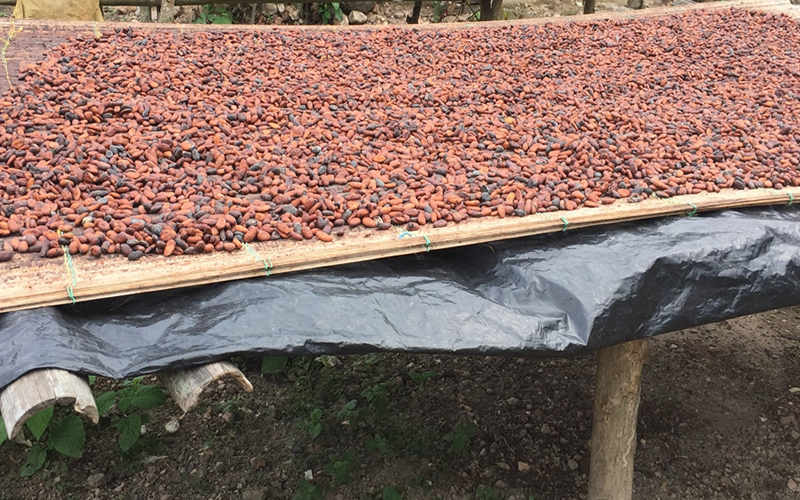STEP 1 : CULTIVATION
Our process starts with cultivating the cocoa beans on our estate farm in Adeembra a cocoa farming community in the Eastern Region of Ghana. Cocoa grows in the zone 20˚ North and 20˚ South of the equator ..(What is know as the cocoa belt). Temperature range 18C to 30C, with well distributed rainfall across the year.
Takes about 3 to 5 years for newly planted trees to start bearing fruit. The tree develops flowers on the trunk that turns into the fruit call cocoa pod. Each tree will yield about 20 to 40 pods per year with each weighing 300g to 540g depending the variety. Each pod contains about 20 to 60 seeds, approx 25% of the pod weight.
Takes about 5 to 6 months for the flowers to develop into matured pod. The tree can grow up to 15 m, but pruned to about 3m for easier harvesting.
Work on the farm like any other farming is hard labor. Pruning the trees, removing weeds etc… is an all year round work till harvest time.
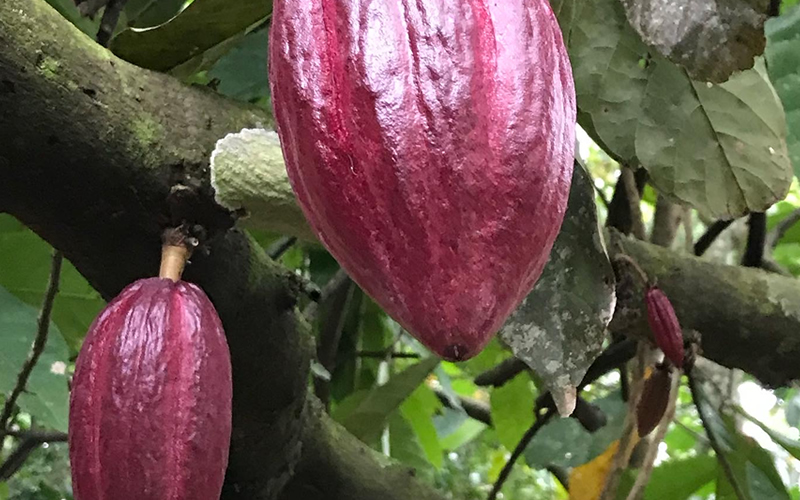
STEP 2: HARVEST
Cocoa harvest is spread over several month, twice a year during the main and mid crop
season. In Ghana main harvest times are from September through December, while mid crop season is from April through June.
Once the pods are ripe, we carefully cut each pod one at a time from the trees trunk using machetes or, for the higher pods, using long poles with a cutting edge. We take extra care to ensure that the stalks of the tree are not damaged and can produce fruit the following year.
We then carry all the harvested pods and accumulate them at a central location. This is really a labor of love, I mean hard labor gathering and carrying heavy pods from different locations across a 10 acre farm to a central location where the beans can be removed from the pods for fermentation.
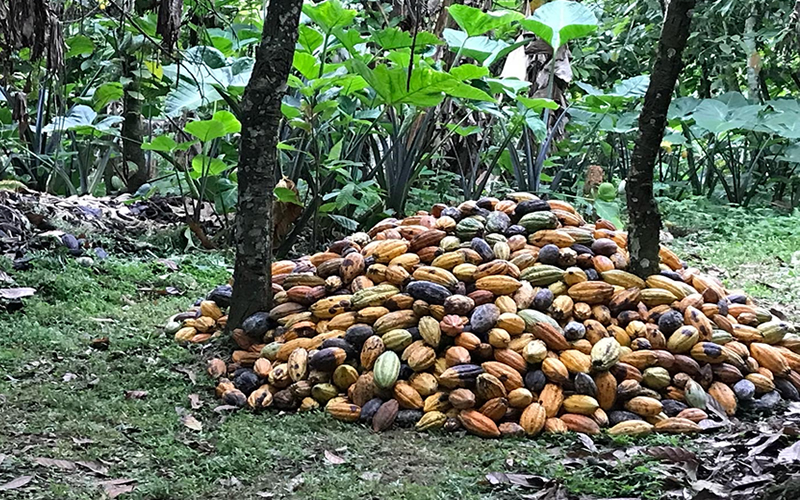
STEP 3: FERMENTATION
The Pods are cut open to remove the beans from the pod for
fermentation. There are two methods for fermentation,
1. Box type practiced in Caribbean, Latin America and Asia where the beans are put in the topmost of a three step box with holes that will allow the water to drain. The beans are then transferred to the next box after two or three days for even fermentation.
2. Heap type practiced in West Africa, the beans are heap on banana or plantain leaves on the ground and then covered with banana or plantain leaves.
The beans are left to ferment for about 5~7days and turned after two or three days for even fermentation. During fermentation the temperature rises up 50C. Fermentation help to kill the beans from germinating and also helps in the development of precursor for aroma development that determines flavor of chocolate.
Pictures on the shows before fermentation (white) and after fermentation (brownish)
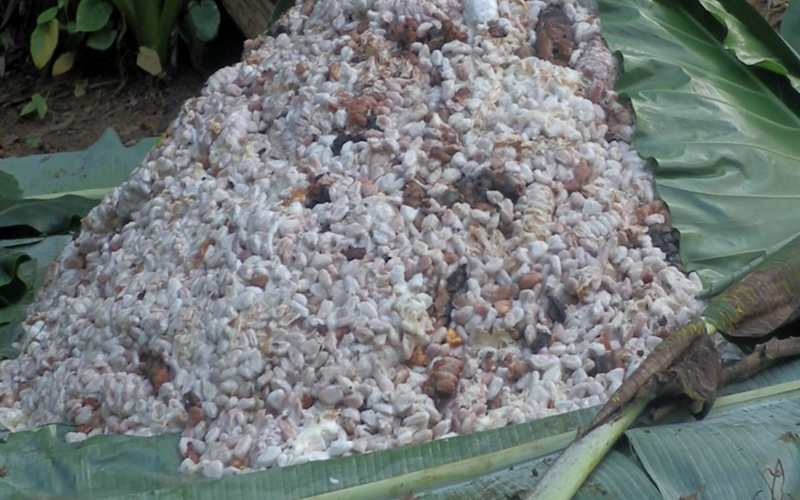
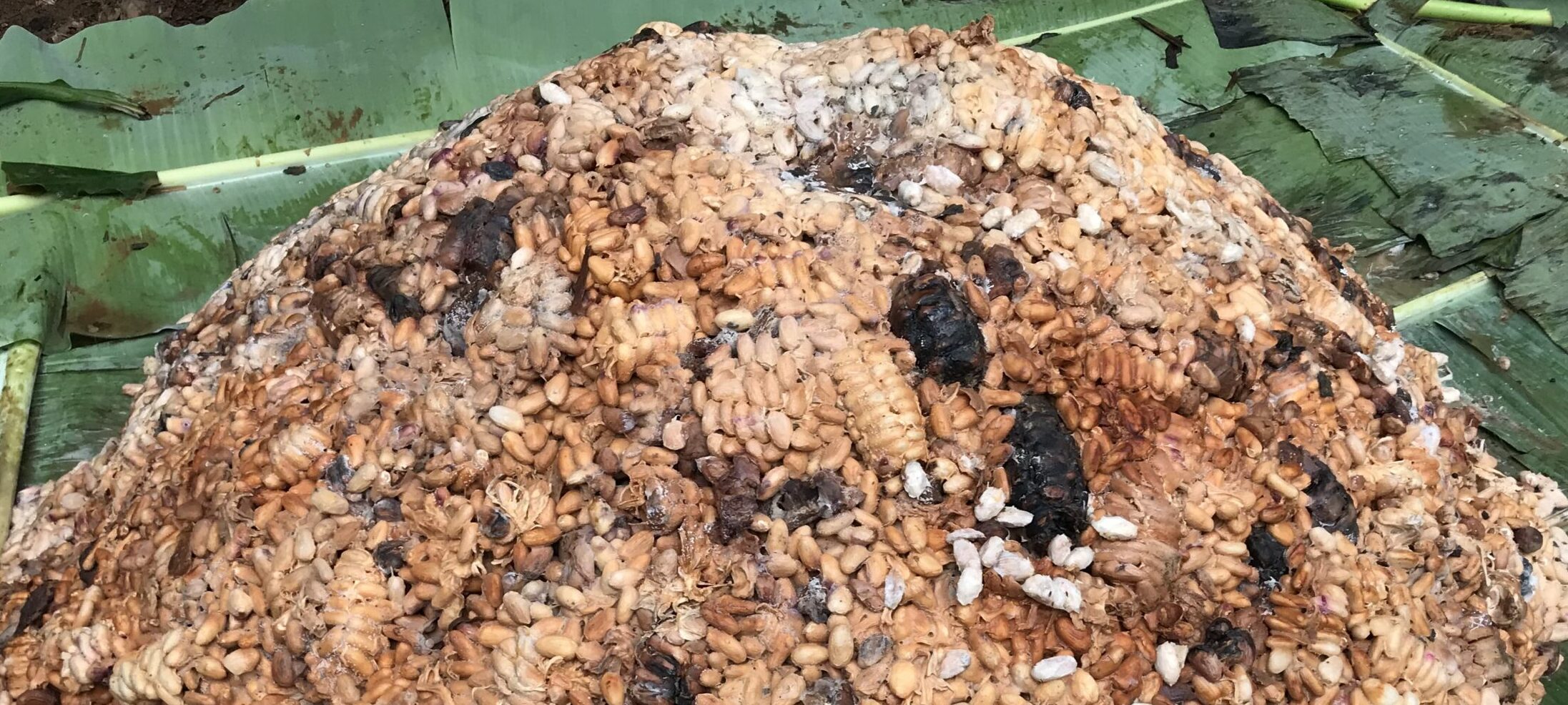
STEP 4: SORTING AND DRYING
After the fermentation we sort the beans removing spoiled and black spotted bean and then dry the good beans under direct sunlight on bamboo mats for at least 4 ~ 7 days. Drying reduces about 60% to 70% of the moisture content. Once the bean have dried, we package them and transport to our factory for processing into various cocoa derivatives.
We also spread the spoiled beans on the farm to decompose to enrich the soil.

